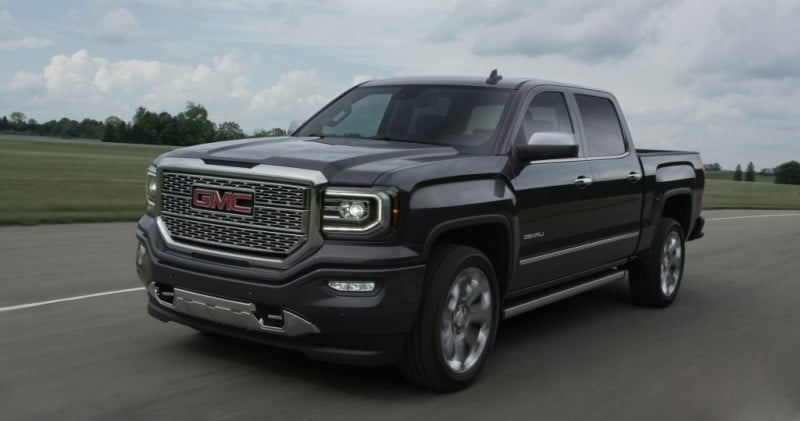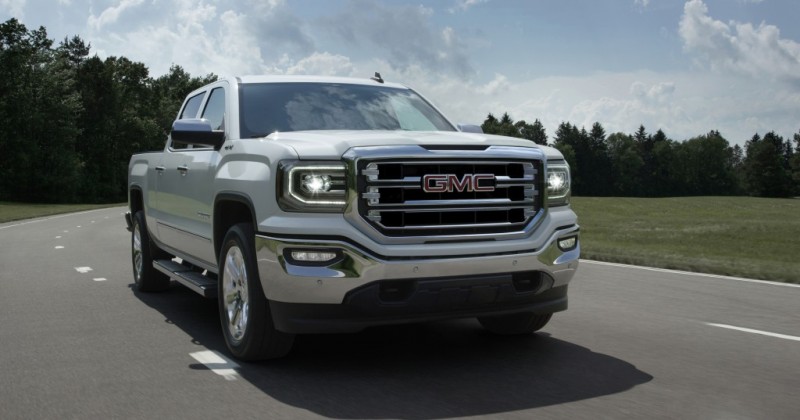http://www.cheatsheet.com

Source: GMC
Regulations are forcing automakers to figure out how to improve the fuel efficiency of all their vehicles, and that includes trucks. Advances in engine and transmission technology can help, but since trucks need to be capable utility vehicles, they’re naturally heavy. Throw in all the features truck owners expect these days, and they’re even heavier. In order to improve fuel economy, something has to be done to get that weight down, and until carbon fiber becomes more economical, aluminum is the best material to use.
Yes, it’s more expensive and difficult to work with, but it also has a much better strength-to-weight ratio than steel does. When Ford used it on the F-150, the weight savings were in the neighborhood of 700 pounds compared to what it would have weighed if steel had been used.
Considering what a major reduction in weight Ford was able to achieve by using aluminum, it would make sense for both GM and Ram to make the switch to aluminum as well. Ram hasn’t made a lot of noise on the aluminum front, but rumor had it that the next-generation GM trucks were going to be either entirely or mostly aluminum.
Because using a lot more of the lighter metal on future products makes so much sense, and GM was already most likely going to make the switch for its next-generation trucks, it was confusing to see Chevrolet release a series of ads attacking Ford for its use of aluminum. None of the ads were specifically dishonest, but only one of them addressed a legitimate criticism of it – the potential for increased repair costs.
The other two were nothing more than cheap shots at Ford based on people associating aluminum with easily-crumpled things like cooking foil and soda cans.

Source: GMC
The company has yet to officially confirm that it’s moving forward with the switch to aluminum, but Reuters is reporting that GM is spending nearly $900 million to overhaul its truck plant in Flint, Mich. Unnamed sources claim the investment is necessary to retool the plant to be able to accommodate the new equipment necessary for aluminum and lightweight steel.
It would appear, then, that despite building a whole advertising campaign around the idea that using aluminum to build trucks is a bad idea and that real truck buyers have no interest in an aluminum truck, the next-generation GM trucks will, in fact, incorporate extensive use of aluminum. How GM will handle the inevitable backlash for running its current anti-aluminum ads once the new Silverado and Sierra are introduced has yet to be seen.
But the good news is that those trucks should benefit tremendously from a drop in weight. The cylinder deactivation technology that GM currently uses helps make its trucks much more fuel efficient than you would expect from vehicles not using forced induction. Future improvements to that technology combined with lighter-weight trucks could potentially see highway fuel economy in the most efficient model edge close to 30 miles per gallon than ever before. Achieving that goal would be a significant improvement, but don’t forget that the current Corvette is already rated at 29 miles per gallon on the highway and has a 460-horsepower V8 engine.
It may be a few generations before a production gasoline-powered truck breaks 30 miles per gallon, but it will happen eventually, and it’s going to be partly thanks to the use of advanced lightweight materials in the truck’s construction. GM may be sour on aluminum for now, but as far as we can tell, all signs point to a change of heart when it comes time to announce the new Silverado and Sierra.
No comments:
Post a Comment